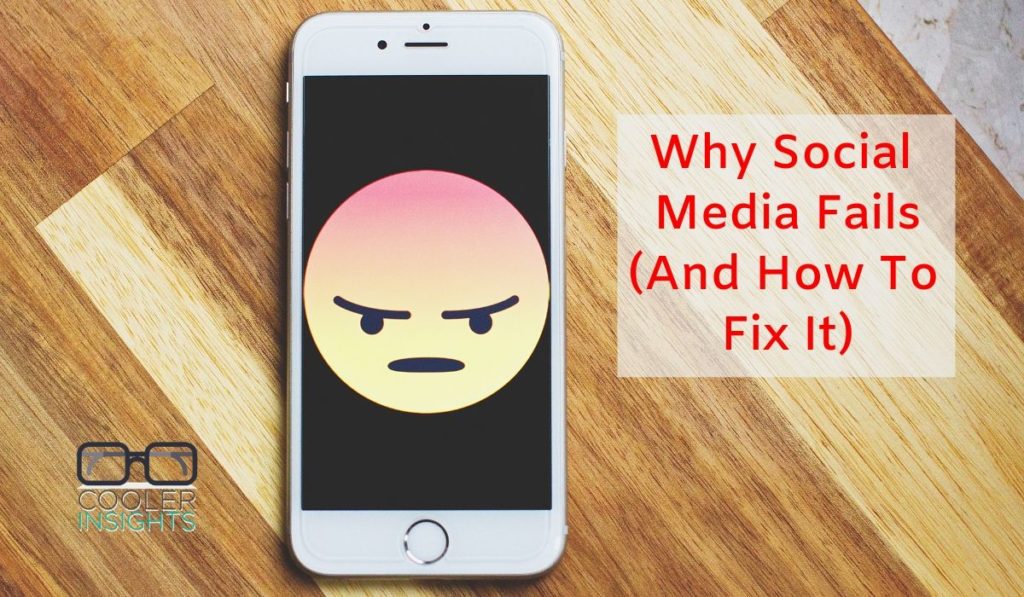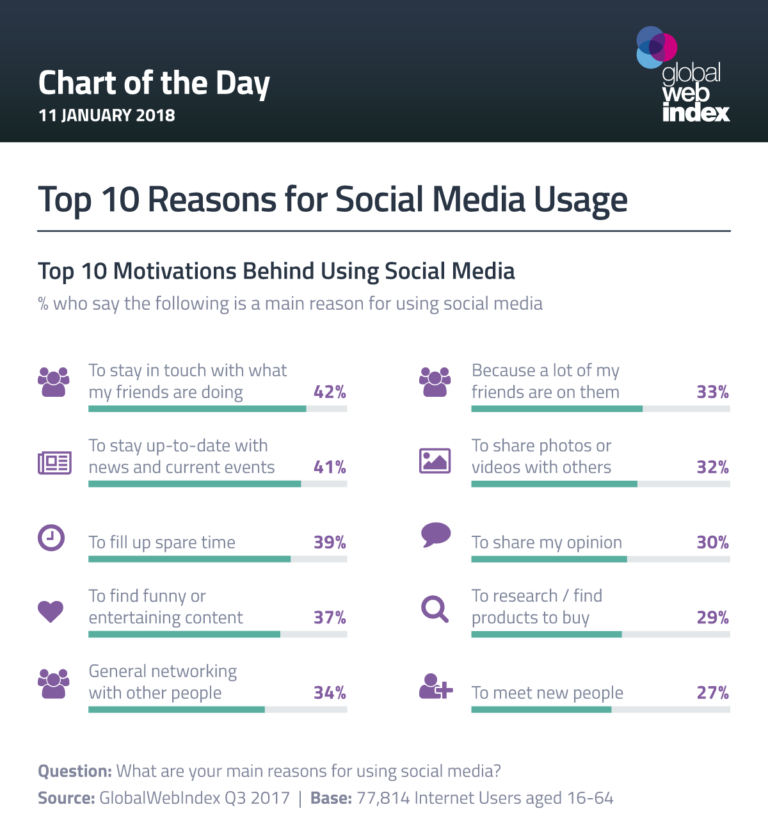
Is Social Media Marketing not yielding the results which you want? Well, you aren’t alone.
With the increasing cost of advertising on Facebook (70 percent increase in 2018 with 17 percent drop in impressions), and growing consumer distrust of social networks, the social media game will get tougher for brands in 2019.
And the situation probably isn’t going to improve. Not at least based on the latest research, which revealed the following startling figures…
- Nearly three-quarters (74 percent) of respondents agree or strongly agree that the integrity of sites like Facebook and Twitter have diminished in the past couple of years.
- Almost half (47 percent) of respondents said they would consult a forum such as Quora for an answer to a specific question, yet only 27 percent said they would consult a Facebook Group.
- Only 18 percent felt that Facebook would be more reliable as a source of information than a specialised forum
- Only 9 percent said that Twitter would be more reliable as a source of information than a specialised forum
Now why is social media failing so badly as the “promised land” for brand marketers around the world?
The problem probably lies in the fact that too many companies—and individuals—are gaming social media for their commercial or political means.
They opt to take short-cuts, and try to ‘hack’ the latest algorithms. They find ways and means to ‘trick’ users into engaging and interacting with their content, without delivering real value.
Let us look at some of these techniques in detail.
#1 Fake Claims and False Hopes
Yes, we do know that there are lots of fake news generated by political parties trying to undo each other. But did you know that many brands are also guilty of this practice?
From product hyperbole to incredible rags-to-riches stories, brand marketers have taken their audiences for fools. While the channels are different from the past, the boasts and claims remains the same.
Oh, and false testimonies. This is yet another bane of the digital age.
#2 Premature Pitches
The age-old saying that you should not sell but make it easy for others to buy seems to fall on deaf ears online.
Time and time again, I see people hustling for business on Facebook, LinkedIn, Instagram and YouTube. Here’s their modus operandi:
- Connect with you on social media
- Send a direct message to you
- Compliment you on your thought leadership, looks or charm/wit
- Ask to meet for coffee or a phone chat so that they can demonstrate what they have to offer
- Or send their entire deck to you…. unsolicited!
Social media users are sick and tired of endless pitches from brands and individuals selling their wares online.
#3 Spamming and Oversharing
Heard of TMI (Too Much Information)? Well, you’re probably guilty of oversharing on social media.
This isn’t necessarily a bad thing if you’ve got interesting and engaging content to share which others love to read. However, it can be a mite irritating when every excruciating detail of your brand is shared and pegged with a Call To Action (CTA) for readers to respond to.
Posting too frequently on social media may also reduce your engagement rates, especially if the bulk of your content are company or product updates that nobody really cares about.
#4 Passive-Aggressive Marketing
Have you been ‘assaulted’ by an passive-aggressive lead-generation ad on Facebook? I sure have, and I shudder whenever I come across these ads on my newsfeed.
Often such ads take the form of a “If you do not take up this offer, you may be walking away from a successful future” kind of vibe. Such ads often incorporate some element of false scarcity—think “never to be repeated” or “once in a lifetime deals.”
What’s sickening about these deals is that the amount you may end up paying could be higher than a newbie using that service for the first time. And that is the reason why online trust is eroding faster than the ice on the North Pole.
#5 Ignoring Customer Feedback
A positive customer experience is the best form of marketing on social media.
Unfortunately, many brands ignore the negative comments on their social media channels, or worse, block users from commenting on them.
Leaving a negative comment unattended gives the impression that you are too busy to care about your customers. What’s worse is that an ignored customer may become a furious customer – one who decides to start a negative campaign against your brand.
#6 Inconsistent Brand Voice
I’ve seen many brands veer from one trending topic to another, riding on the hottest news items of the day. While there is a time and place for newsjacking, doing so excessively may dilute your brand voice.
You should also be mindful about the influencers whom you choose to work with. While A-list influencers and celebrities may have a larger fanbase and higher web traffic, they could be less influential than thought leaders with deep expertise in your space.
#7 Perpetual Horn Tooting
Finally, and perhaps most commonly, brands just love to talk about themselves on social media.
Now there is nothing wrong about talking about your products features and benefits. Or announcing which awards your company has won.
However, doing so continually in a self-aggrandizing manner can be off-putting to your community. Especially if you do it continuously without providing your readers with a reprieve.
What Your Customers Really Want
So what should you do for your customers? Let’s hear it from an expert.
According to Mark Schaefer in a recent Social Media Marketing podcast, there are five things which your online audiences care about:
- They want to belong.
- They want to be respected.
- They want to be loved.
- They want to protect their self-interests.
- They want to find meaning in their lives.
In short, your online brand story should be all about your customers. Its not about you, or your CEO, or your R&D department, or your products.
Know Your Customers
Start by knowing who your customers really are. This usually starts with creating a detailed Customer Profile, outlining the following dimensions of your customer:
- Demographics: Age, Family Background, Location, Occupations, Income, Education, Housing Type, and related factors
- Psychographics: Interests, beliefs, attitudes, independence vs community focus, lifestyles, and habits
- Online Behaviours: Where do they frequent? What do they look for online – search keywords and social media topics? Who are their influencers?
- Purchase Behaviours: What drives them to consider a brand? What is their buying journey like?
- Pain & Pleasure Points: What are the problems that your customers have? Do they have any FAQs that needs to be answered? What about their dreams and desires?
Beyond the above, it is useful to do face-to-face interviews with your potential customers or conduct a survey or poll to find out what they care about.
Help Them Achieve Their Goals
People visit Facebook, LinkedIn, Instagram, YouTube and Twitter for specific purposes.
According to this study by Global Web Index, they use social media mainly to stay in touch with their friends, stay updated on news and current events, and find entertaining and funny content.

Courtesy of GlobalWebIndex
Based on this observation, it makes sense for you to publish content that can help your potential customers to meet their goals online. This may include sharing funny and entertaining content that is relevant to your business, showcasing people whom they may find interesting, and crafting topical content that gets them to share their opinions.
Occasionally, sharing content about your industry or product categories may also be useful. Here, it is useful not to just promote your own products but to help them to make better buying decisions.
Focus on Humans
Social media isn’t called social for nothing. People are keen to connect with other humans.
Unfortunately, this is often neglected by product-centric brands and organisations.
Here’s a tip. Rather than extol your product benefits or brand designs, shift the focus on the humans…
- Interview and write about customers who have benefited
- Talk about your business partners and employees helping to put your product together
- Talk about how they feel and what has changed for them
- Share a day in the life of your stakeholders—make them relatable to your audiences
Build Brand Trust through Authenticity
Cold, slick and immaculate brands just don’t cut it in the social age. Successful social brands aren’t perfect—the most endearing ones often come with their own quirks and idiosyncrasies.
People want to know who are the people behind your brands, and what makes them tick. They are interested in reading stories of what inspired your founder to create the brand, the struggles which your product development team went through, or the challenges which you may have faced.
Being authentic also means that you are open about the limitations of your products and services. Let your prospects know what your product or service can and cannot do. Draw clear boundaries about who it is suitable for, and who it isn’t.
Teach Before You Reach
Customer education is one of the pillars of the digital age.
It not only helps you to build trust, be likable and generate respect from your potential customers – it also shows that you care about your community. And that may win you more brand fans than any fancy logo or classy campaigns that you can run.
In educating your customer, consider what their pain points are and provide content that addresses those pain points. Write a longer SEO-friendly version for your website, and extract a social-media friendly snippet for Facebook, LinkedIn, Instagram or Twitter.
(Read this post to learn more about SEO vs Social Media friendly content.)
Be Helpful and Responsive
Finally, take a leaf from Jay Baer and Hug Your Haters.
No, I am not asking you to literally reach your arms through your screens to do so, but to be responsive to all social media customer feedback. Good, bad or ugly.
Responding to customer complaints online yields four benefits…
- It helps you to turn unhappy customers into neutral or positive customers
- It turns unhappy customers into brand advocates
- It helps you to garner customer insights and intelligence
- It differentiates you from your competitors
Conclusion—Return to Being Social
Social media loses its lustre when brands focus so much on optimizing their campaigns that they lose their humanity.
This runs against the grain of what platforms like Facebook, Instagram, Twitter, and LinkedIn are all about. It also makes consumers wary about spending on social media, resulting in an exodus of potential customers.
To address this, we need to re-instate the whole purpose of social media. Begin with identifying who your customers are. Help them with content that inspires, educates and enriches. Build communities focused on interests—not income.
What are your thoughts on making social media great again? Do you agree with what I’ve written here?

Back to basics!
Putting the humanity back into digital. Great reminder!